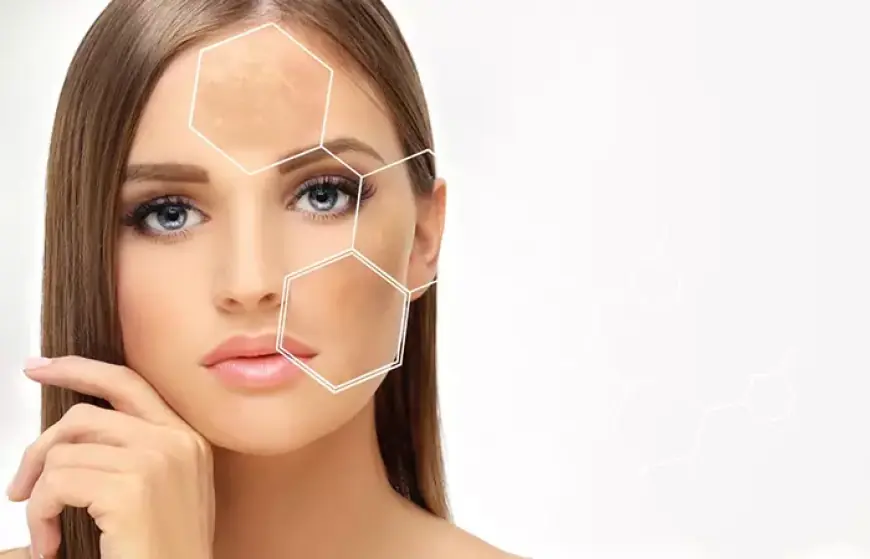Melasma Treatment: The Truth About Laser Options
Choose permanent melasma treatment in Dubai to permanently treat your melasma with long-lasting results at affordable prices.

Melasma is a common skin condition that causes dark, discolored patches, typically on the face. These patches, often triggered by sun exposure, hormonal changes, or genetics, can be stubborn and emotionally distressing for those affected. Traditional treatments like topical creams and chemical peels may offer partial relief, but for some individuals, the results are inconsistent or slow. In recent years, laser therapy has emerged as a promising alternative—but what’s the truth behind this high-tech solution?
How Laser Treatment Works on Melasma:
Laser treatments use focused beams of light to target the pigment in melasma-affected skin. The goal is to break down excess melanin—the pigment that causes dark spots—without damaging the surrounding tissue. Different types of lasers are used based of Melasma Treatment in Dubai (علاج الكلف في دبي) on the depth and severity of the condition. Some lasers, like fractional lasers, penetrate deeper layers, while others, like Q-switched lasers, focus on superficial pigmentation. The type of laser chosen plays a critical role in the effectiveness of the treatment.
The Benefits of Laser Therapy for Melasma:
One of the primary advantages of laser treatment is its potential for quicker results compared to topical agents. Many individuals notice visible lightening of patches after just a few sessions. Laser therapy can also be customized based on skin type and melasma severity, making it a versatile option. Moreover, when performed correctly, it may trigger skin rejuvenation, improving overall texture and tone beyond pigment reduction. These combined benefits are especially appealing for individuals seeking a smoother, more even complexion.
Risks and Limitations of Laser Treatment:
Despite its benefits, laser therapy is not without risks. In some cases, the treatment may lead to temporary redness, swelling, or even increased pigmentation (post-inflammatory hyperpigmentation), particularly in individuals with darker skin tones. There’s also a risk that melasma could return, especially if sun protection is neglected post-treatment. The condition is chronic and often influenced by internal triggers, which means laser therapy addresses the symptoms—not the root cause.
Choosing the Right Type of Laser:
Different lasers work in unique ways, and not all are suitable for every skin type. For example, low-energy lasers like low-fluence Q-switched Nd:YAG lasers are considered safer for darker skin because they minimize the risk of burns or hyperpigmentation. Fractional lasers, which target tiny zones of skin, are effective but must be used cautiously. Non-ablative lasers are less aggressive and can be a safer choice for individuals prone to irritation. The success of laser treatment heavily depends on matching the technology to the individual's skin and melasma pattern.
The Role of Skin Type and Lifestyle:
Laser effectiveness can vary significantly based on skin type, sun exposure, and hormonal balance. Fitzpatrick skin types IV to VI—darker complexions—require special consideration due to their higher risk of pigment changes. Moreover, individuals who spend time in the sun without strong protection may see limited improvement or a quick return of symptoms. Long-term success often depends not only on the laser itself but also on maintaining a strict skincare and sun protection routine after the procedure.
What to Expect During and After Treatment:
Laser sessions for melasma are typically quick, often lasting less than an hour. Mild discomfort—similar to a rubber band snap—may be felt during the procedure. After treatment, the skin might appear red or slightly inflamed for a few hours or days. Over time, as the pigmented cells are absorbed and eliminated by the body, the skin tone becomes more even. However, multiple sessions are usually necessary for noticeable improvement, and results may take weeks to fully develop. Consistency and patience are key.
Integrating Laser with Other Treatments for Lasting Results:
Laser treatment works best when integrated into a comprehensive melasma management plan. Dermatologists often recommend combining lasers with topical treatments like hydroquinone alternatives, retinoids, or antioxidants. Lifestyle changes such as strict sun protection, stress management, and hormonal balance monitoring also play crucial roles. While laser therapy may be a powerful tool, it is most effective when used as part of a long-term strategy rather than a standalone solution.
Conclusion:
Laser options offer a promising approach to Melasma Treatment in Dubai (علاج الكلف), especially for individuals who haven’t seen success with conventional methods. However, they are not a one-size-fits-all cure and require careful customization and aftercare to be effective and safe. Understanding the pros, cons, and realistic outcomes of laser therapy helps individuals make informed decisions, ensuring the best possible path toward clearer, more confident skin.
What's Your Reaction?
 Like
0
Like
0
 Dislike
0
Dislike
0
 Love
0
Love
0
 Funny
0
Funny
0
 Angry
0
Angry
0
 Sad
0
Sad
0
 Wow
0
Wow
0

















































